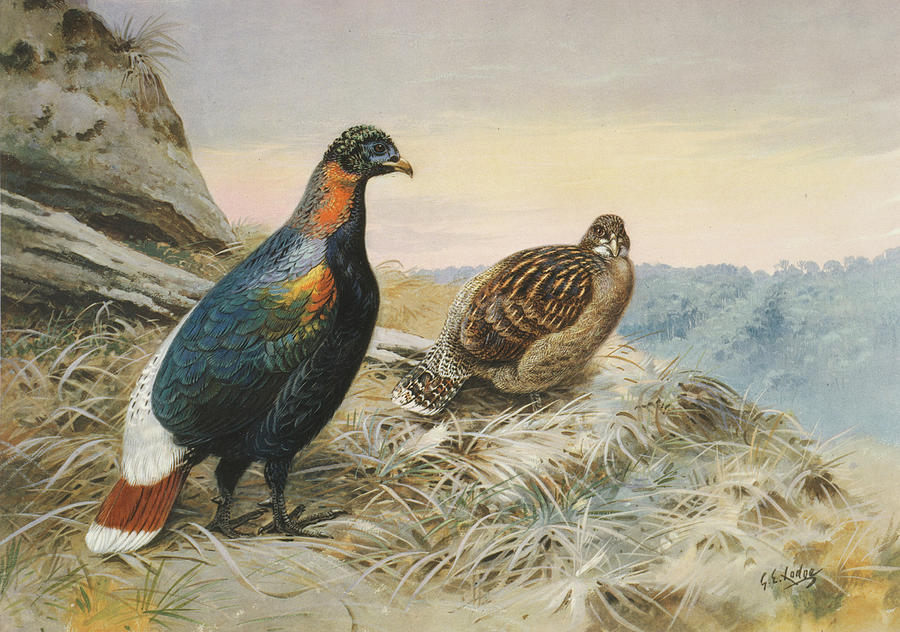

In Pakistan, it is most common in the Khyber Pakhtunkhwa province and has also been recorded in Kaghan, Palas Valley, and Azad Kashmir. The Himalayan monal's native range extends from Afghanistan and Pakistan through the Himalayas in India, Nepal, southern Tibet, and Bhutan. The female also has a crest, but whereas the male's is green and has spoon-shaped feathers, the female's is shorter, and brown with ordinary feathers (2) (4). Females do not share the same splendour as males, with overall dark brown feathers, except for a white throat and rump patch, and the bright blue circle around the eyes. The breast is dark brown and the tail feathers are light brown.
Impeyan monal pheasant Patch#
At the nape of the neck is a yellow patch which forms the top edge of the bluish black wings and the purplish black back. The head is bright green, the eyes ringed with blue and the neck reddish brown. The male Himalayan monal possesses a wiry, metallic green head-crest that is absent in other monal species, as well as a chestnut brown tail, light brown wings and a white rump that is visible in flight. The iridescent rainbow-like plumage of the male is surpassed only by the slightly larger Chinese monal ( Lophophorus lhuysii). This method of foraging leaves conspicuous areas of turned over soil up to 25 cm deep on hillsides (2).Ī stunningly colourful member of the pheasant family, the Himalayan monal is the national bird of Nepal. Like many of the pheasants, quails and partridges in the Phasianidae family, the Himalayan monal has very strong legs and a long, curved beak which together enable it to dig into the hard soil of the mountains to uncover seeds, tubers, shoots, berries, and insects. After six months the young are completely independent and must search for food and mates alone (5). The female must incubate the eggs alone, but the male will stand guard throughout the 27-day incubation period and until fledging to protect the eggs and chicks from predators.


Once a female notices his display they mate and shortly afterwards she scrapes a nest in the ground and lays between three and five eggs. The male switches from calling only in the early morning to calling throughout the day. The breeding season begins in April when the monals are at higher altitudes. Males also use body displays to attract females bobbing the head-crest and fanning their tail feathers. A highly communicative bird, the Himalayan monal uses several different call types to express meaning to its mate, other birds in its foraging group, or intruding birds.


 0 kommentar(er)
0 kommentar(er)
